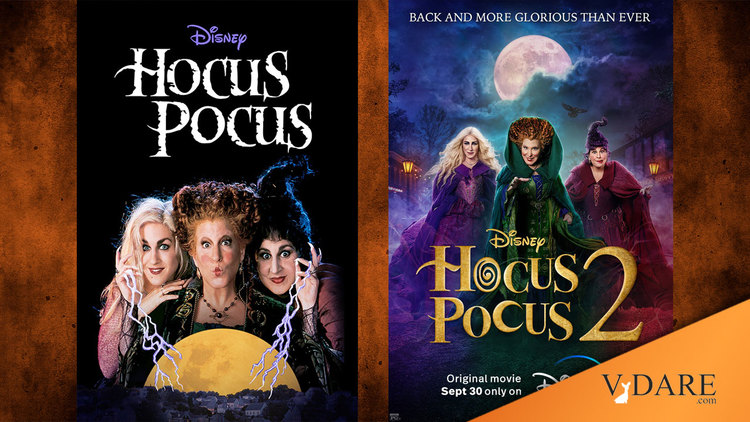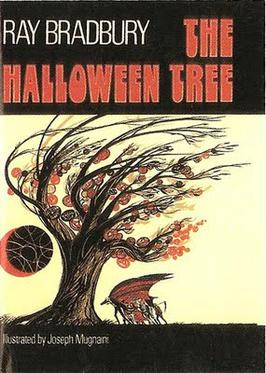


By Paul Kersey
10/31/2022
See also: Return Of Return Of The Many Wars On Halloween — A Halloween Roundup
Over the weekend, one of my best friends called to wish me a Happy Halloween. We chatted about family and our plans to celebrate the occasion with one of our favorite traditions, trick or treating. We grew up in one of the best communities for trick or treating, and my friend regaled me with stories about our boyhood, and the joy in going out unchaperoned by parents, and riding our bikes to procure the most candy we could as quickly as possible.
Those memories from childhood, and being a budding teenager set loose upon our city on Halloween night, are irreplaceable. They remind me of why I wrote my first piece at VDARE.com, Diversity Vs. Halloween — Can Your Neighborhood Pass The Trick-Or-Treat Test?
My point: The degree of whiteness in your community directly correlates to your kids having a Happy Halloween; i.e., safe and joyful trick or treating, “that American tradition which now identifies whether or not you live in a safe community where parents feel comfortable sending their kids out into the night to collect candy from their neighbors,” as I wrote:

Ray Bradbury’s book, The Halloween Tree, was written to help young children understand the traditions and history of Halloween so that they could appreciate why they dressed up as hosts, mummies, skeletons, etc. Now, as so many communities across the nation have parents who bowl alone, having a book dedicated to extolling the virtues of Trick or Treating when the communities across America look radically different from when Bradbury wrote his book in 1972 seems like an anachronism.
How many parents live in cities where they don’t feel safe sending their kids out into the night to Trick or Treat? Well, if you are a Stuff White People Like white person living in a gentrified neighborhood in Washington DC, Atlanta, or New York, perhaps you throw exclusive parties for your children where just you and your other friends’ children (some toting Sandra Bullock-worthy accessories) gather to celebrate Halloween.
To test the true health, strength and vitality of your neighborhood (and by extension, city), ask yourself how many Trick or Treaters you get on Halloween? Are the streets full of young people dressed in fantasy costumes, walking from house to house asking for candy?
Remember, Trick or Treating is truly a celebration of community, and if the houses around you are adorned in Halloween decorations in anticipation of ghoulish revelers, you probably live in a city with an excellent school system (i.e., an almost all-white school system).
Unhappily and unfortunately, since 2011 when I wrote about Bradbury’s fine tale, The Great Replacement has accelerated the population decline of the Historic American Nation — white America. The United States is running not only out of white people but also out of communities where unfettered trick or treating can take place!
From 2000 to 2018, 109 counties in 22 states, from California to Kansas to North Carolina, went from majority white to majority nonwhite — that is, counties where non-Hispanic whites are no longer the majority, according to a Pew Research Center analysis of Census Bureau data. …
Overall, 293 U.S. counties were majority nonwhite in 2018. Most of these counties are concentrated in California, the South and on the East Coast, with few in the country’s middle section.
[Reflecting a demographic shift, 109 U.S. counties have become majority nonwhite since 2000, by Jens Manuel Krogstad, Pew Research Center, August 21, 2019]
More tellingly, “the U.S. Census Bureau has just released its last batch of race-ethnic population estimates in advance of the 2020 census, with data indicating that the national headcount will reveal a more diverse nation than was previously expected,” Brookings reported two years ago:
The new estimates show that nearly four of 10 Americans identify with a race or ethnic group other than white, and suggest that the 2010 to 2020 decade will be the first in the nation’s history in which the white population declined in numbers.
Over the decade’s first nine years, racial and ethnic minorities accounted for all of the nation’s population growth, and were responsible for population gains in many states, metropolitan areas, and counties that would have otherwise registered losses due to declines in their white populations. And while the U.S. and more than half of its states have shown absolute declines in populations under age 25, such declines were largely due to white losses among the youth population. These declines would have been even greater were it not for youthful gains among racial and ethnic minorities, especially the Latino or Hispanic population.
[The nation is diversifying even faster than predicted, according to new census data, by William H. Frey, July 1, 2020]
Fittingly, two Halloween-themed movies showcase this transformation, and why so many people yearn for the America celebrated when the original was released.
In 1993, Disney released what has become a beloved Halloween classic, Hocus Pocus. Set in Salem, Massachusetts, on Halloween night, all the main characters in this children’s film are white, as is virtually every trick or treater. The Historic American Nation was not yet under a full assault by diversity and multiculturalism, now mandatory in nearly all Hollywood’s theatrical and streaming releases.
You can count the number of non-white characters who appear in the movie on one hand. That does not mean it’s overtly or even covertly racial. Rather, it celebrated an America — and an American Halloween — still in existence in 1993, untouched by The Great Replacement.
It’s a fun movie that celebrates family. The protagonist is a white boy who takes his little sister trick or treating, only to inadvertently unleash three witches on the city, who must suck the souls out of kids to ensure they survive another day. It’s not the most wholesome plot for a kid’s film, but forget that.
My friends and I used to watch Hocus Pocus before trick or treating in the hope we would unleash witches on our town, after which we would heroically save our families and neighbors. Alas, it never happened.
Growing up in an idyllic Whitopia, we took for granted the whiteness around us, because it’s what we knew. It was axiomatic. And even in the 1990s, parents let their children, many barely teenagers, trick or treat by themselves. The only threat was having your house toilet-papered for giving out the wrong kind of candy.
I saw the movie in the theater, and instantly fell in love with it, so I was excited about Disney+’s sequel that came out just in time for Halloween 2022.
Unfortunately, none of the first film’s key characters, save the three witches who terrorized Salem in 1993, play a significant role in Hocus Pocus II and return only briefly. And, of course, the sequel retconned a black character into the movie who was not in the original but, off-screen, saw the witches fly off on broomsticks and vowed to one day bring them back. And he isn’t the only woke character shoehorned into the film.
Fans of the original aren’t all that thrilled. The audience gave it a less-than-enthusiastic 51 percent at Rotten Tomatoes. Critics gave it 63 percent. That so-so reception hasn’t stopped some from celebrating the writers’ inserting as much of the current year Zeitgeist as possible:
The sequel to the cult classic is fast approaching when it releases on Sept. 30 on Disney+ with the return of the Sanderson Sisters and Billy Butcherson in this movie.
But it will also be the most PROGRESSIVE sequel ever as well that features a diverse cast of the 3 main leads with a black, hispanic and white girl and including DRAG QUEENS who impersonate the sanderson sisters.
The original did not have any characters of colour nor did it have any LGBTQ+ representation and even though original director, Kenny Ortega was not involved with the project he convinced the makers to be LGBTQ+ friendly and add those characters, thus the inclusion of actors from RuPaul’s Drag Race.[Hocus Pocus 2 will be PROGRESSIVE with 3 DIVERSE Leads!! Who’s the Hottest??, Gamefaqs.com, August 5, 2022]
A friend and I planned to watch Hocus Pocus and the sequel back-to-back, but made it through only the first 20 minutes of Hocus Pocus II, before my somewhat tolerably liberal friend noticed what I did: “Weren’t all the kids white in the first movie?”
We both laughed at the forced diversification. Then we turned it off.
We spent the remainder of our time together sharing memories of growing up in an America where the racial consequences of The Great Replacement were decades away. The nostalgia, and the magic of the original movie, transported us back to crisp autumn evenings traversing our communities with friends long since forgotten.
It’s been 29 years since Hocus Pocus hit theaters, and the racial transformation of our nation has progressed to the point where major news outlets celebrate the irreversible demographic change [Their America Is Vanishing. Like Trump, They Insist They Were Cheated, by Michael H. Keller and David D. Kirkpatrick, New York Times, October 23, 2022].
With these changes come the end of safe trick or treating. We sacrificed social capital and trust to the gods of diversity, inclusion, equity, tolerance and forever ending white privilege.
Perhaps the ultimate sign of “white privilege” is once living in a country where, less than three decades ago, thousands of cities existed in which white parents had no problem sending their children out to trick or treat. That’s the kind of social capital that diversity doesn’t just erode, but instead destroys.
The only way to have the magic of Halloween is to live in communities that look like the Salem in the original Hocus Pocus.